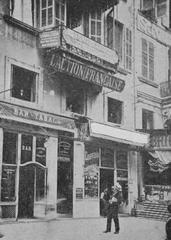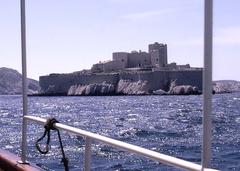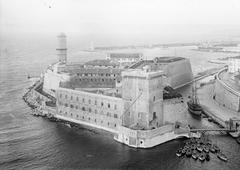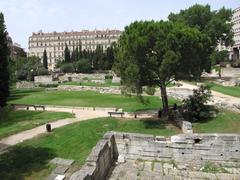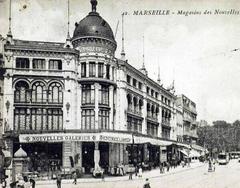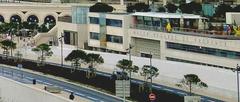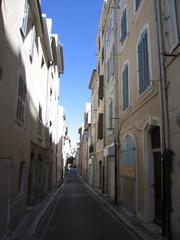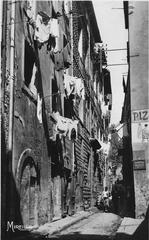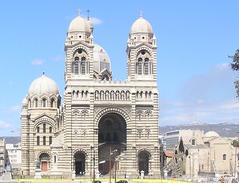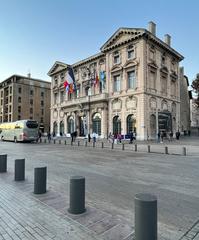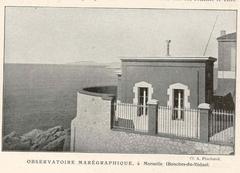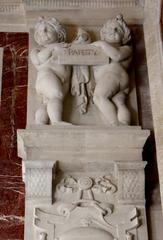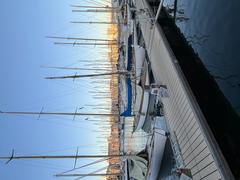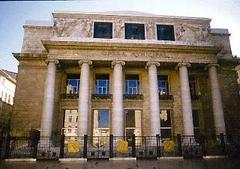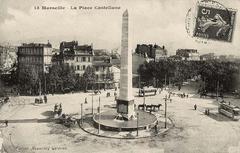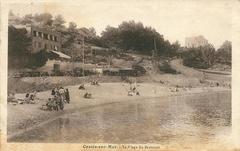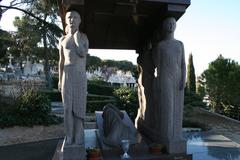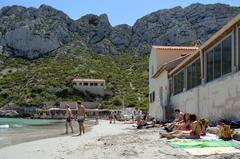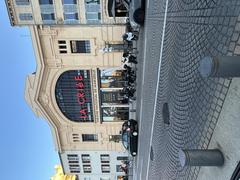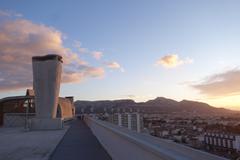Comprehensive Guide to Visiting Le Panier Marseillais, Marseille, France
Date: 18/07/2024
Introduction
Le Panier, the oldest district in Marseille, France, invites visitors on a captivating journey through time, showcasing layers of history that date back to 600 BC. Originally established by Greek settlers from Phocaea, this area, known as Massalia, has evolved into a vibrant district that beautifully blends its ancient past with a thriving modern cultural scene. Nestled by the Mediterranean coast, Le Panier has served as a bustling port, a Roman residential area, a medieval hub of social and economic activity, and a center for industrialization. Its narrow, winding streets, rich with architectural marvels from various periods, make it a must-visit destination for history enthusiasts, architecture aficionados, and cultural explorers alike. This comprehensive guide will delve into the fascinating history of Le Panier, provide essential visitor information, spotlight top attractions, and share practical travel tips to help you make the most of your visit. Whether you’re interested in the ancient Greek and Roman ruins, the ornate Baroque buildings, or the vibrant street art, Le Panier offers a rich tapestry of experiences that reflect the diverse and dynamic spirit of Marseille (Marseille Tourism, France This Way, Cultural Marseille).
Table of Contents
- Introduction
- Ancient Beginnings
- Roman Era
- Medieval Period
- Renaissance and Baroque Influence
- 19th Century Industrialization
- World War II and Post-War Reconstruction
- Modern Era and Cultural Renaissance
- Visitor Information
- Top Attractions
- La Vieille Charité
- Cathédrale de la Major
- Musée des Docks Romains
- Place de Lenche
- La Maison Diamantée
- Le Panier Street Art
- Hôtel de Cabre
- Les Accoules Church
- Le Panier Market
- La Canebière
- Le Panier’s Hidden Courtyards
- Le Panier’s Artisan Shops
- Le Panier’s Culinary Delights
- Le Panier’s Festivals and Events
- Special Events and Guided Tours
- Photographic Spots
- Preservation and Future Prospects
- Conclusion
Exploring Le Panier - History, Visiting Hours, and Tickets
Ancient Beginnings
Le Panier, the oldest district in Marseille, traces its origins back to 600 BC when Greek settlers from Phocaea established the colony of Massalia. This settlement, strategically located on the Mediterranean coast, quickly became a bustling port and a center of trade. The Greeks introduced urban planning, which laid the foundation for the district’s narrow, winding streets that characterize Le Panier today. The ancient Greek influence is still evident in the archaeological remains found in the area, such as the Hellenistic ramparts and the ancient port (Marseille Tourism).
Roman Era
Following the Greek period, Massalia came under Roman control in 49 BC. The Romans expanded the city, constructing grand buildings, forums, and baths. Le Panier, known as the “basket” due to its shape, became a residential area for the Roman elite. The district’s layout was influenced by Roman urban design, with a grid pattern that can still be discerned in some parts. Notable Roman remnants include the remains of the Roman docks and the vestiges of the ancient port, which highlight the district’s long-standing maritime significance (France This Way).
Medieval Period
During the Middle Ages, Le Panier evolved into a densely populated area, characterized by its labyrinthine streets and tightly packed houses. The district became a melting pot of cultures, with a significant influx of immigrants from Italy, Spain, and North Africa. This period saw the construction of several important religious buildings, including the Vieille Charité, originally a charitable institution for the poor and now a cultural center. The medieval architecture of Le Panier, with its narrow alleys and stone houses, reflects the district’s historical significance and its role as a hub of social and economic activity (Marseille History).
Renaissance and Baroque Influence
The Renaissance and Baroque periods brought significant changes to Le Panier. The district saw the construction of grand buildings and the beautification of public spaces. The Vieille Charité, designed by the renowned architect Pierre Puget, is a prime example of Baroque architecture in Le Panier. This period also marked the rise of Marseille as a major port city, with Le Panier at its heart. The district’s architecture from this era, with its ornate facades and grandiose structures, reflects the prosperity and cultural richness of Marseille during the Renaissance and Baroque periods (Architectural Digest).
19th Century Industrialization
The 19th century brought industrialization to Marseille, transforming Le Panier into a bustling working-class neighborhood. The district’s proximity to the port made it a prime location for factories, warehouses, and workshops. This period saw a significant increase in population, with many workers and their families settling in Le Panier. The industrial heritage of the district is still visible in its architecture, with many former industrial buildings now repurposed as residential and commercial spaces. The 19th century also saw the construction of new infrastructure, such as the Saint-Laurent Church, which remains a prominent landmark in Le Panier (Marseille Heritage).
World War II and Post-War Reconstruction
Le Panier suffered significant damage during World War II, particularly during the Nazi occupation and the subsequent liberation of Marseille. The district was heavily bombed, leading to the destruction of many historic buildings. The post-war period saw extensive reconstruction efforts, with a focus on preserving the district’s historical character while modernizing its infrastructure. The reconstruction of Le Panier was guided by a commitment to maintaining its unique architectural heritage, resulting in a blend of old and new that defines the district today (WWII History).
Modern Era and Cultural Renaissance
In recent decades, Le Panier has undergone a cultural renaissance, becoming a vibrant and dynamic district that attracts artists, tourists, and locals alike. The district’s rich history and unique charm have made it a popular destination for visitors seeking to explore Marseille’s cultural heritage. Le Panier is now home to numerous galleries, studios, and cultural institutions, such as the Musée Regards de Provence and the Centre de la Vieille Charité. The district’s narrow streets and colorful facades provide a picturesque backdrop for its thriving arts scene, making it a must-visit destination for anyone interested in the history and culture of Marseille (Cultural Marseille).
Visitor Information - Tickets, Visiting Hours, and Tips
To fully enjoy your visit to Le Panier, it’s essential to plan ahead. Here are some practical details to help you make the most of your trip:
- Visiting Hours: Most attractions in Le Panier are open daily from 10 AM to 6 PM. However, it’s advisable to check specific sites for precise hours.
- Tickets: Entrance to many historical sites is free, but some museums and cultural centers may charge a fee (typically around €5-€10). It’s worth checking for any available discounts or combined tickets.
- Travel Tips: Wear comfortable walking shoes to navigate the district’s narrow and often steep streets. Public transportation is readily available, with several bus and tram lines serving the area.
Special Events and Guided Tours
Le Panier hosts various events throughout the year, such as art exhibitions, music festivals, and cultural fairs. Guided tours are also available, offering in-depth insights into the district’s history and hidden gems. These tours can be booked through local tour operators or online platforms.
Photographic Spots
Le Panier is a photographer’s paradise. Some of the best spots for photography include the colorful street art on Rue du Panier, the panoramic views from Place des Moulins, and the charming facades of the Vieille Charité.
Preservation and Future Prospects
Efforts to preserve the historical and cultural heritage of Le Panier continue to be a priority for the city of Marseille. The district’s unique character and historical significance have led to various preservation initiatives, including the restoration of historic buildings and the promotion of sustainable tourism. As Marseille continues to grow and evolve, Le Panier remains a testament to the city’s rich and diverse history. The district’s future prospects are closely tied to its ability to balance preservation with modernization, ensuring that it remains a vibrant and dynamic part of Marseille for generations to come (Preservation Society).
Conclusion
Le Panier is more than just a historical district; it’s a living museum that tells the story of Marseille through the ages. Whether you’re a history buff, an architecture enthusiast, or simply looking for a charming place to explore, Le Panier has something to offer. Plan your visit today and immerse yourself in the rich tapestry of Marseille’s oldest neighborhood.
Call to Action: For more information on Le Panier and other historical sites in Marseille, download our mobile app or follow us on social media for the latest updates and travel tips.
References
- Marseille Tourism, 2024, Marseille Tourism
- France This Way, 2024, France This Way
- Cultural Marseille, 2024, Cultural Marseille
- Preservation Society, 2024, Preservation Society
- Architectural Digest, 2024, Architectural Digest
